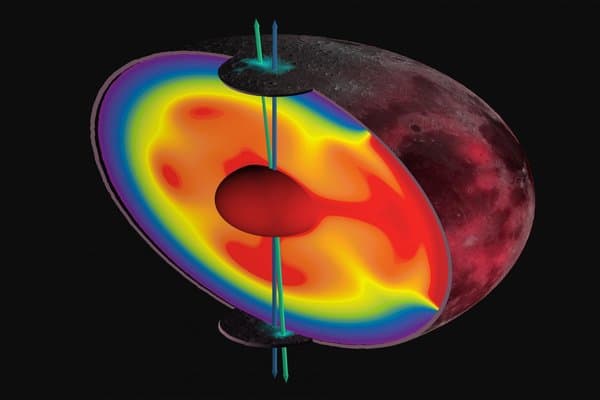NASA Study Reveals: Earth's Moon Strayed From Its Axis A Billion Years Ago
Earth’s natural satellite, the moon has now achieved reputation for being a member of the Solar system’s exclusive “True Polar Wander†club. Planetary scientist Matt Siegler at the Southern Methodist University at Dallas, recently discovered that the moon’s axis gradually shifted 125 miles or 6 degrees, over a billion years, and this event first occurred about 3 billion years ago.
The team made this pioneering discovery when analyzing NASA's data concerning Hydrogen that is stacked in adequate amounts in the North and the South Pole of Moon. These remain hidden from the sunlight year after year and give an indication of its own axis. Direct exposure to sunlight could lead the gas to fly off into space, which now possesses a solid physical state. Such a peculiar mismatch convinced the SMU team to concentrate on data taken from NASA's Lunar Prospector and Lunar Reconnaissance Orbiter missions. After running a thorough statistical analysis, the team confirmed that the ice is offset at each pole by the same distance, but exhibits exactly opposite directions.

Planetary bodies settle into their axis based on their mass
The conclusion of the aforementioned research lead the team to understand that the lunar axis was shifted by 6 degrees over 1 billion years. Siegler explained that billions of years ago, the moon’s interior heat pushed its face in the upward direction which resulted in a 6 degree shift in polar positions. If the position is compared to the Earth, it will indicate a shift of the Earth’s axis from Antarctica to Australia.
Astronomy says that planetary objects choose their axis depending on their mass and gets settled almost permanently in that orientation. However, it has been observed that in some rare cases, the orientation changes which shifts its axis as an output. This particular discovery gave Mars an entry to an exclusive club in which the members’ axis has been shifted permanently. In addition to the Earth, Mars, Saturn's moon Enceladus and Jupiter's moon Europa also satisfy the conditions, making the Moon the 5thmember. The research was reported in the Nature journal under the title "Lunar true polar wander inferred from polar hydrogenâ€.
Source: #-Link-Snipped-#
The team made this pioneering discovery when analyzing NASA's data concerning Hydrogen that is stacked in adequate amounts in the North and the South Pole of Moon. These remain hidden from the sunlight year after year and give an indication of its own axis. Direct exposure to sunlight could lead the gas to fly off into space, which now possesses a solid physical state. Such a peculiar mismatch convinced the SMU team to concentrate on data taken from NASA's Lunar Prospector and Lunar Reconnaissance Orbiter missions. After running a thorough statistical analysis, the team confirmed that the ice is offset at each pole by the same distance, but exhibits exactly opposite directions.

Planetary bodies settle into their axis based on their mass
The conclusion of the aforementioned research lead the team to understand that the lunar axis was shifted by 6 degrees over 1 billion years. Siegler explained that billions of years ago, the moon’s interior heat pushed its face in the upward direction which resulted in a 6 degree shift in polar positions. If the position is compared to the Earth, it will indicate a shift of the Earth’s axis from Antarctica to Australia.
Astronomy says that planetary objects choose their axis depending on their mass and gets settled almost permanently in that orientation. However, it has been observed that in some rare cases, the orientation changes which shifts its axis as an output. This particular discovery gave Mars an entry to an exclusive club in which the members’ axis has been shifted permanently. In addition to the Earth, Mars, Saturn's moon Enceladus and Jupiter's moon Europa also satisfy the conditions, making the Moon the 5thmember. The research was reported in the Nature journal under the title "Lunar true polar wander inferred from polar hydrogenâ€.
Source: #-Link-Snipped-#
0
